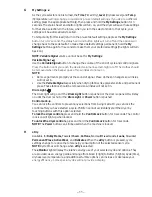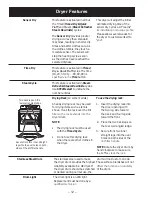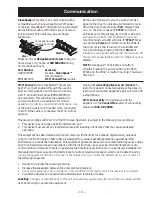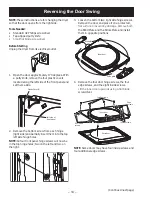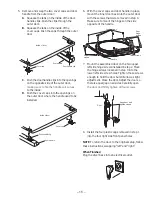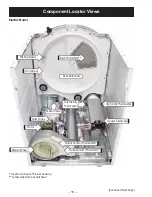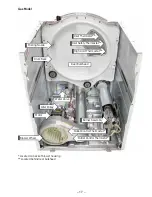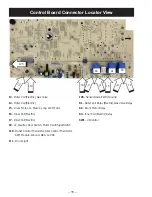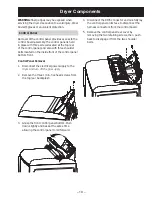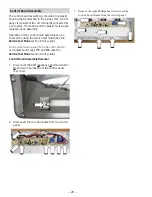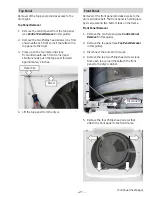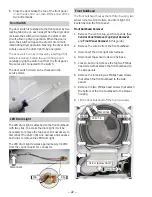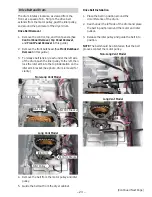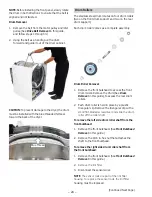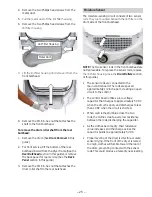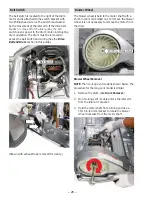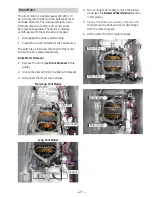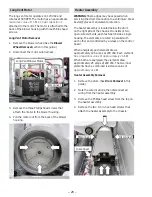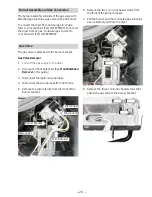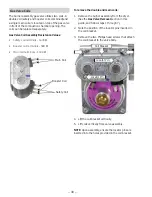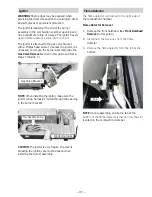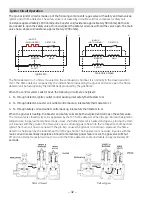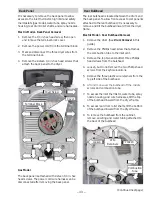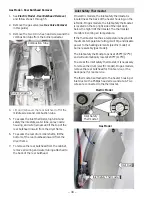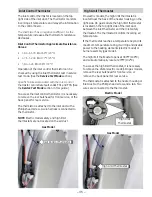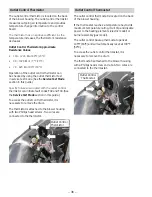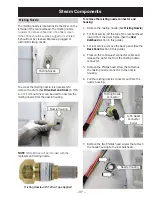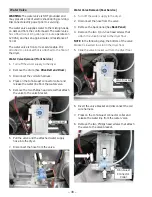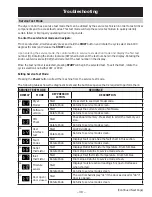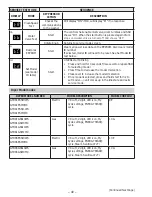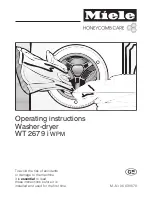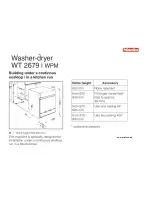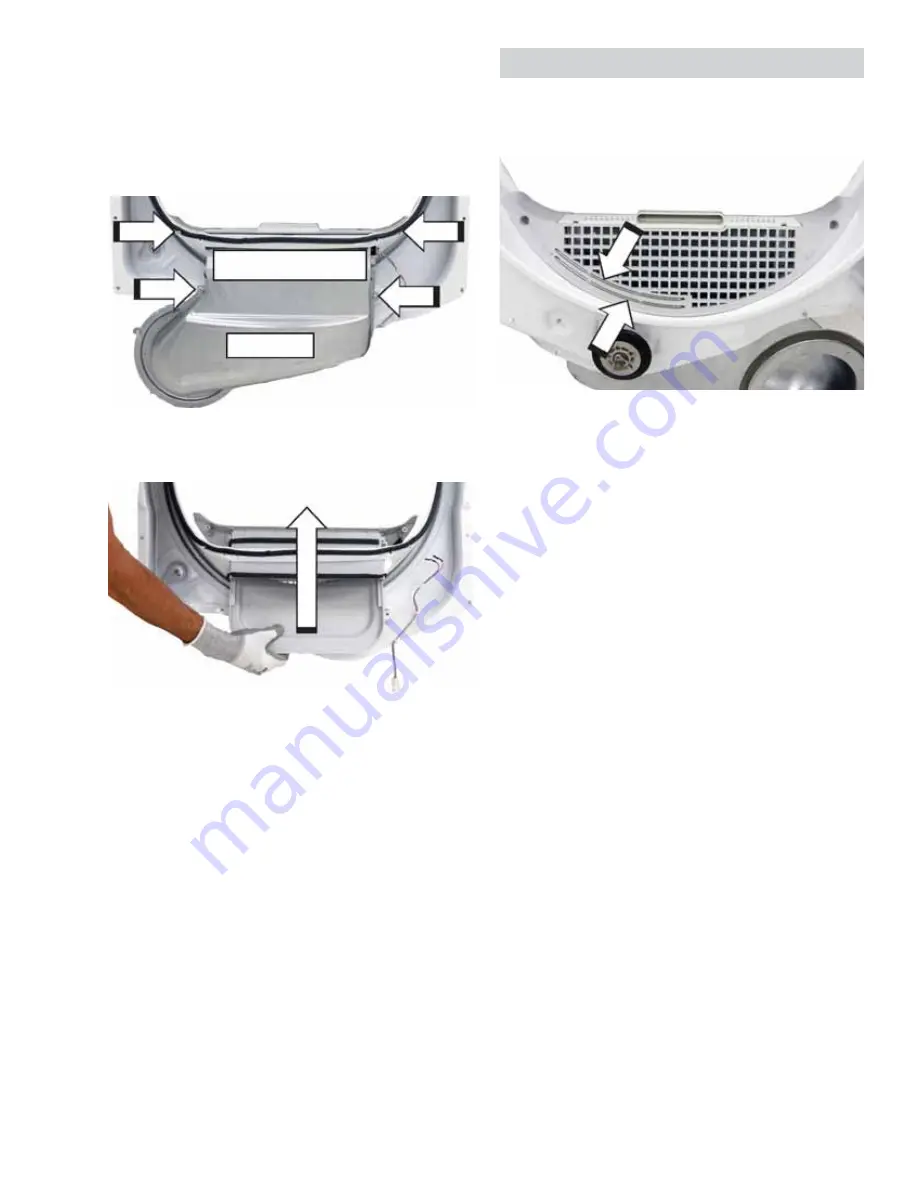
– 25 –
4. Remove the two Phillips head screws from the
metal duct.
5.
3XOOWKHPHWDOGXFWRȺWKHOLQW¿OWHUKRXVLQJ
6. Remove the two Phillips head screws from the
OLQW¿OWHUKRXVLQJ
7.
/LIWWKHOLQW¿OWHUKRXVLQJDQGUHPRYHLWIURPWKH
front bulkhead.
8. Remove the 9/16 in. hex nut that attaches the
shaft to the front bulkhead.
To remove the drum roller shaft from the rear
bulkhead:
1. Remove the drum. (See Drum Removal in this
guide.)
2. For front service, tilt the bottom of the rear
bulkhead inward from the dryer frame (See the
Rear Bulkhead section in this guide), or remove
the back panel for rear service. (See the Back
Panel section in this guide.)
3. Remove the 9/16 in. hex nut that attaches the
drum roller shaft to the rear bulkhead.
Moisture Sensor
The moisture-sensing circuit consists of two sensor
URGV7KH\DUHPRXQWHGEHQHDWKWKHOLQW¿OWHURQWKH
drum side of the front bulkhead.
NOTE: The two sensor rods in the front bulkhead are
not replaceable. To replace the sensor rods, replace
WKHOLQW¿OWHUKRXVLQJ6HHWKH
Drum Rollers section
of this guide.)
• The sensor rods are connected to the
main control board. The rods are spaced
approximately 1/2 inch apart, creating an open
circuit to the control.
• The control board utilizes a low-voltage
capacitor that charges to approximately 5 VDC
when the circuit is open, and discharges to less
than 1 VDC when the circuit is shorted.
• When wet clothes tumble across the two
rods, the clothes create a very low resistance
between the rods, discharging the capacitor.
• As the clothes become dry, their resistance
value increases and the charge across the
capacitor builds to approximately 5 VDC.
• Proper leveling of the dryer is vital for accurate
sensor drying. If the front of the dryer is raised
too high, clothes will tumble toward the rear of
the drum, preventing contact with the sensor
rods. This could produce a false dryness reading.
Metal Duct
Lint Filter Housing

